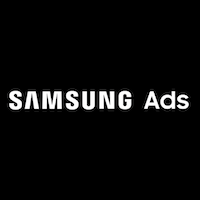Samsung Ads
Samsung Ads delivers innovation through Advanced TV solutions to brands, marketers and agencies around the globe.
Skills
This promoted content is produced by a publishing partner of Open Mic. A paid-for membership product for partners of The Drum to self-publish their news, opinions and insights on thedrum.com - Find out more
Changes in streaming behaviors allow brands to reach new audiences - here's how
December 19, 2022

Netflix’s decision to reverse its pledge to remain ad-free has had a major impact on the streaming industry - it has started rolling out ‘Basic with Ads’, its first advertising video-on-demand (AVOD) subscription tier and Disney has now followed suit. This demonstrates a shift within the streaming world.
High-profile streaming brands are moving quickly to try and adapt to evolving consumer expectations of video-on-demand. Samsung Ads’ latest report, Decoding the Streaming Landscape, offers insight into shifting consumer streaming behaviours across EU5 markets (which include the UK, Germany, Italy, Spain and France) and how these impact advertisers.
Advertisement
AVOD’s rise isn’t the only video-on-demand (VOD) offering the report focuses on. Samsung Ads’ research documents consumer engagement across multiple services including subscription video-on-demand (SVOD), broadcaster video-on-demand (BVOD), and free ad-supported TV (FAST).
So what does migration to ad-supported streaming models mean for the industry?
Post-pandemic habits continue to shape TV viewership
Television provided a means for escape for many during the pandemic. Viewing spiked as people were unable to leave their homes - and this trend hasn’t subsided.
Connected TV now accounts for 52% of consumers’ total viewing time compared to linear’s 48% share. On-demand services, thanks to their ability to integrate themselves seamlessly into consumers’ busy lives, have soared in popularity. Delve a little deeper, however, and this changing of the guard goes beyond simply video-on-demand streaming versus linear.
The end of lockdown restrictions coupled with current economic uncertainty is fuelling a subscription churn amongst SVOD services. SVOD’s total share of hours per TV declined by 5 percentage points between January and June 2022, whilst AVOD enjoyed a 5 percentage point rise during the same period.
Consumers are increasingly open to exploring alternative streaming options outside of mainstream platforms such as Netflix and Disney - even if this means watching more ads via addressable TV.
Our recent Advertising Engagement Study found that over 2 in 3 UK consumers (69%) feel it is acceptable to watch adverts if the content is free. And this is the foundation for the growth of another trend - free ad-supported TV (FAST) channels that offer both scheduled and on demand content.
Will we all be watching TV via an app soon?
The BBC’s Tim Davie generated a lot of media coverage recently when he said it’s possible over the next decade there may be changes in “bringing the BBC together in a single offer” – one interpretation being a single super app that brings BBC content under one roof.
He said: “Imagine a world that is internet-only, where broadcast TV and radio are being switched off and choice is infinite.”
Streaming enthusiasts are already immersing in app only viewing – in fact we are seeing an explosion in streaming app usage – there were 4.9 billion app launches on Samsung TVs in Europe in the first half of this year. All Smart TVs have a platform with which to use apps (Samsung Ads uses Tizen) and offer a variety of video apps.
A big driver of app usage is to find more content. Audiences know there are great shows and programs out there to enjoy and it’s the job of Smart TV manufacturers and interface designers to make discovery more seamless and speedy – 79% look to the Smart TV home screen to help with unearthing content or for recommendations.
FAST services will be an integral part of CTV’s future
Samsung TV Plus, Rakuten and Pluto TV are amongst the most high-profile of the aforementioned FAST services. And whilst these are relatively new to the streaming scene and don’t yet possess the reach of established SVOD platforms they are taking off as more viewers discover they offer curated, free content together with the ability to jump between ‘live’ channels and VOD convenience.
Large libraries of on-demand content, alongside access to scheduled ‘live channels’, have allowed FAST platforms, like Samsung TV Plus, to thrive. The FAST user base rose 9% between H1 2021-22, with the average monthly hours consumed also increasing by 19%.
Increased Smart TV sales are also helping FAST services enjoy sustained success. These channels can be pre-installed on newly purchased Smart TVs, as is the case with Samsung TV Plus. And with forecasts predicting Smart TV penetration will reach 51% of global households by 2026, FAST’s role is only going to become more prevalent.
These stats show how quickly FAST channels are becoming a valuable asset for brand marketers. Samsung TV Plus itself has quickly become among the foremost FAST services, experiencing an 8% upturn in monthly viewers and 21% increase in average monthly hours consumed between H1 2021-22.
Brands have historically struggled to connect with ‘hard-to-reach’ streaming audiences. Samsung TV Plus’s combination of valuable content and unique service - coupled with Samsung’s worldwide reputation - empowers advertisers to engage new audiences in today’s fragmented TV landscape. With viewer fragmentation more evident than ever this is the optimal moment to begin exploring new mediums - and FAST is a good place to start.
Follow Samsung Ads Europe on LinkedIn for more insights on TV viewership and CTV trends
By Antonia Faulkner, Head of Marketing & Analytics at Samsung Ads Europe and APAC


